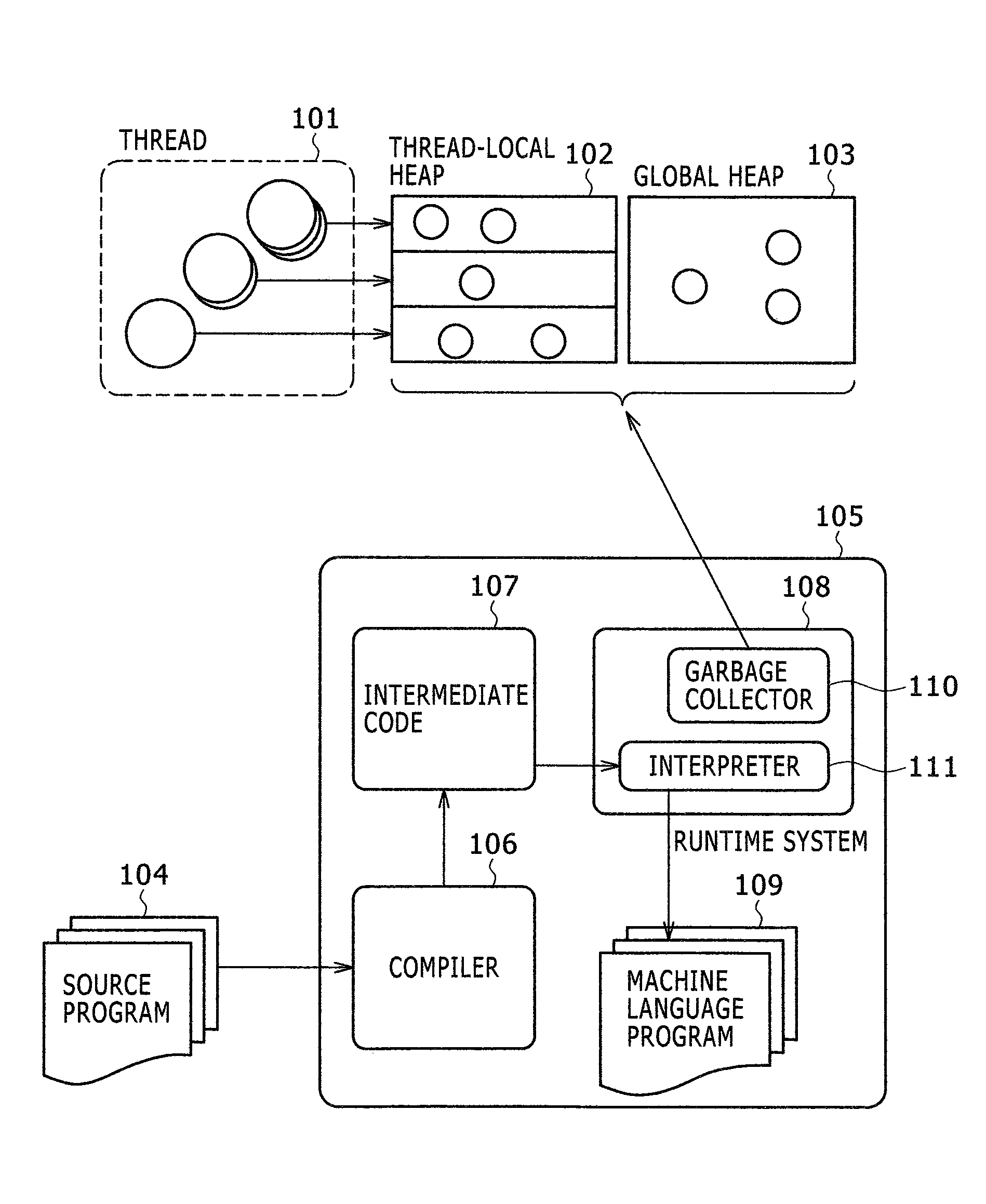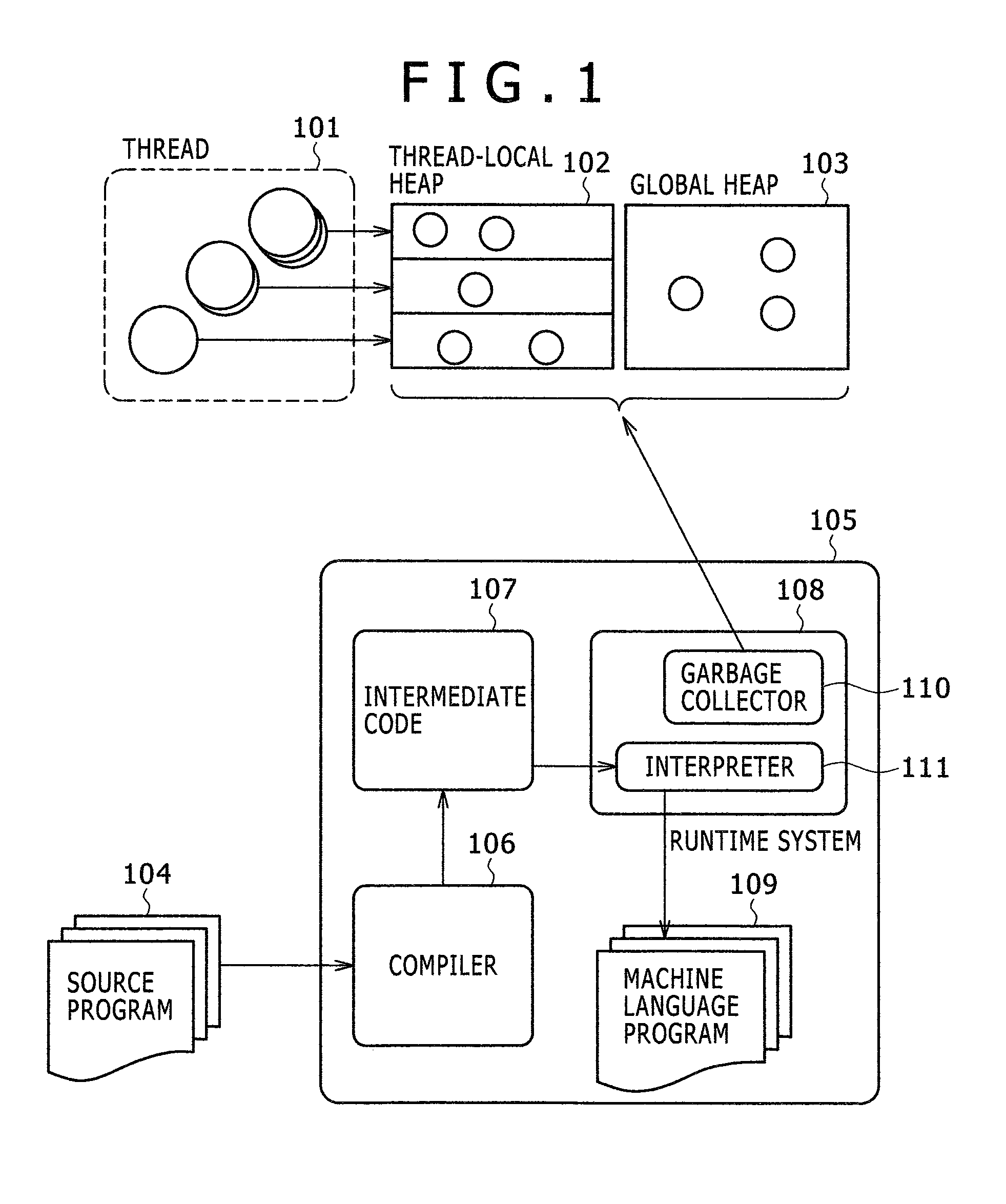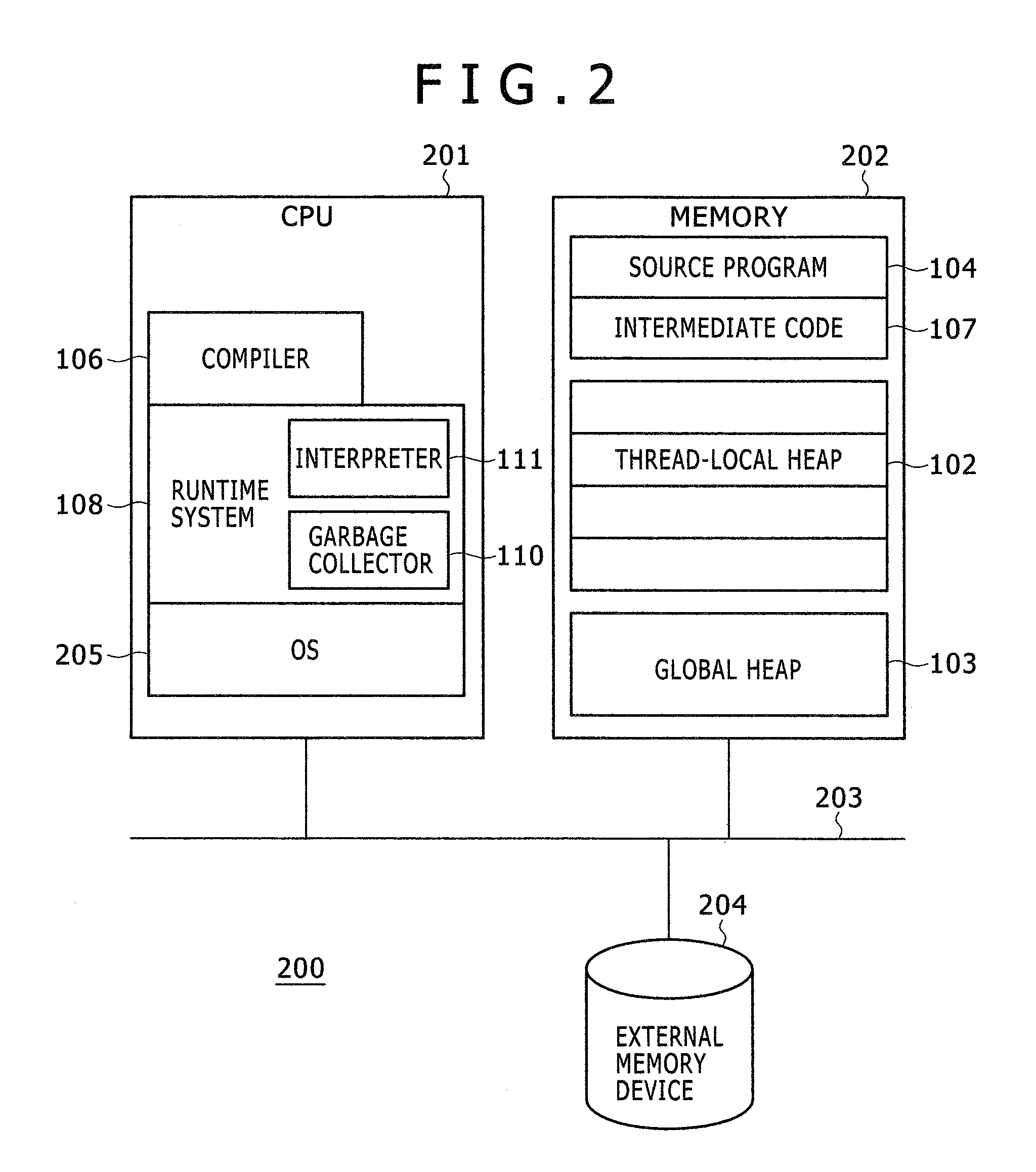Method and system for managing memory for a program using area
a memory management and area technology, applied in memory adressing/allocation/relocation, program control, multi-programming arrangements, etc., can solve the problems of reducing the collectable area within gc cannot be carried out on the thread specific local heap, and memory area fragmentation, etc., to ensure processing responsiveness, avoid memory area fragmentation, reduce the effect of collecting area along with program execution
- Summary
- Abstract
- Description
- Claims
- Application Information
AI Technical Summary
Benefits of technology
Problems solved by technology
Method used
Image
Examples
embodiment 1
[0034]One embodiment of the present invention will now be described with reference to the accompanying drawings.
[0035]FIG. 1 is a schematic view of a so-called language processing system 105 implemented in a computer. A source program 104 described in an object-oriented programming language such as Java for example is converted to intermediate code 107 (byte code in Java) by a compiler 106. The intermediate code 107 is interpreted and executed by an interpreter 111 in a runtime system 108 (in Java, this is called as Java virtual machine (JavaVM), Java runtime environment, or the like). The intermediate code is not only interpreted and executed by the interpreter 111 each time, it may also be converted into a machine language program 109 by a JIT (Just-In-Time) Compiler. The runtime system 108 virtualizes the conversion into machine language and execution thereof, which looks like, to a user, programs being executed on the runtime system 108.
[0036]The runtime system 108 generates one...
embodiment 2
[0070]As for the instruction execution process shown in FIG. 10, if reference is to be made from the data in the global heap 103 to the data in the thread-local heap 102, data being referenced in step 1020 is migrated. When data migration occurs frequently, referenceable data may be allocated to the global heap 103 in advance so that overhead of the data migration can be cut down.
[0071]FIG. 13 illustrates a process of how to switch the data allocation to the global heap 103 and the data allocation to the thread-local heap. In step 1300, it is checked whether the allocation target data has a type of the data allocated to the global heap 103. If so, in step 1305, the data is allocated to the global heap 103. Otherwise, in step 1310, the data is allocated to the thread-local heap 102.
[0072]In step 1300, the decision regarding whether or not the target data has the same type as the data allocated to the global heap can be made according to a user instruction in an option or program, the...
PUM
 Login to View More
Login to View More Abstract
Description
Claims
Application Information
 Login to View More
Login to View More - R&D
- Intellectual Property
- Life Sciences
- Materials
- Tech Scout
- Unparalleled Data Quality
- Higher Quality Content
- 60% Fewer Hallucinations
Browse by: Latest US Patents, China's latest patents, Technical Efficacy Thesaurus, Application Domain, Technology Topic, Popular Technical Reports.
© 2025 PatSnap. All rights reserved.Legal|Privacy policy|Modern Slavery Act Transparency Statement|Sitemap|About US| Contact US: help@patsnap.com



